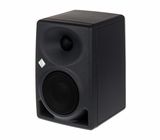I recently bought a pair of KH80 monitors to pair with my KH750 subwoofer. I initially owned the KH120 II + KH750 sub combination, but the need to work in two different locations arose. To address this, I set up the KH80s with the sub at location 1 and moved the KH120 IIs to location 2, ensuring I had a broad frequency range monitor in both places.
The first time I calibrated the KH120 II with the KH750 sub using the MA-1, it took around three attempts to achieve the perfect sound. Once calibrated, the sound was absolutely perfect—stunning and focused. The soundstage was beyond words, providing an unparalleled listening experience.
However, when I attempted to pair my KH80s with the KH750 sub, I couldn’t achieve the same perfect sound. The KH80s sounded harsh and overly bright, lacking focus. Despite trying three or four times, they still sounded like small, bright, and unfocused monitors. I attributed this to their older design, analog inputs, or their small size. Consequently, I decided to return the KH80s and invest in another pair of KH120 IIs, despite the higher cost.
My cat knocked over the monitor stand, causing one of the KH80s to fall from about 1.2 meters onto a hard floor. This fall resulted in a noticeable scratch, making it impossible to return them. Amazingly, despite the fall, the monitor only suffered a scratch with no apparent functional damage, a testament to its robust construction.
Faced with keeping what I initially thought were suboptimal monitors, I decided to make the best of it and recalibrate. Despite four more attempts, the sound remained boxy, too bright, and unfocused. It lacked the immersive quality of the KH120 IIs.
Then, on my last attempt, a miracle happened. I played the first song, and the sound was astounding. It was finally the same amazing sound as the KH120 IIs—pure and focused, with a soundstage that made the music come alive.
Here are my learnings for achieving the best calibration:
Precision is key. The more precise your measurements, the better the calibration. Measure with care and follow the program’s indicated centimeters exactly.
Point the monitors slightly behind your head, not directly at your face. This is crucial for achieving the perfect sound.
Place your subwoofer close to the wall. My sub is to the right, just before the right monitor.
Ensure no surfaces obstruct the space between the microphone and the monitor or subwoofer. Remove the studio table if necessary.
Maintain absolute silence during measurements. Even minor vibrations during the measurement process can affect the final result.
Be patient. If the sound and depth aren’t amazing, the calibration isn’t perfect. Repeat the process until it is.

